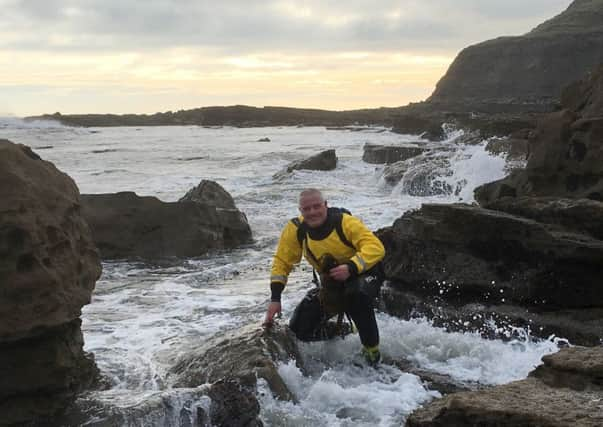Scarborough seaweed – the green ‘welcome mat’ that could save the planet


An audacious attempt to harness the bed of seaweed that forms a long, green welcome mat along the shoreline, as part a plan to put the region at the centre of a new marine industry, will be officially sanctioned today.
On sunken platforms off the Scarborough coast, seaweed will be grown and harvested on an industrial scale, in an enterprise its originators say will generate jobs and support the fishing community.
Advertisement
Hide AdAdvertisement
Hide AdThe Government will announce that it is investing nearly £0.5m in the scheme – at present just a two-person operation that harvests wild seaweed by hand for haute cuisine restaurants and the bathroom cosmetics industry.
But scientists say its real value lies in the production of biodegradable plastics to replace the chemical products whose detritus is damaging to sea life and threatening to humans.
Wave Crookes, a former Scarborough fisherman who trained as a diver in the Navy and was a navigating officer on British Antarctic surveys, is behind the year-old company with his partner, Laura Robinson, a professor of marine science at Bristol University.
“There’s a gap in the UK in exploiting the natural resource that is seaweed,” he said.
Advertisement
Hide AdAdvertisement
Hide Ad“It’s done in Holland, Spain and Scandinavia but it hasn’t taken off here yet. But in Scarborough, we happen to be on a very good stretch of coast for seaweed. It grows prolifically and naturally.”
His company, Seagrown, will receive £472,000 from the Government’s Coastal Communities Fund to establish the country’s first commercial seaweed hatchery. The grant is part of a £36m funding package for tourism and environmental projects around the country, including smaller schemes in Scarborough to develop an art trail and restore neon lighting on the Stephen Joseph Theatre.
Seagrown has licensed a 25-hectare site four miles off Scarborough, which is clear of shipping and otherwise unused.
In the summer, a network of buoys and chains will be anchored there, and the plants grown on submerged lines.
Advertisement
Hide AdAdvertisement
Hide Ad“All seaweed needs is sunlight, not fresh water, chemicals or power. It really is something for nothing,” Mr Williams said.
“As long as we get the light levels right and we propagate the seaweed properly, we will be able to grow it, harvest it and get it into industry.”
Seaweed can be used in the manufacture of bioplastics, biotextiles and medicines, and biofuels. Its growing process is also beneficial, oxygenating the water and soaking up more carbon than a rain forest.
“But you need bigger quantities than you can harvest by hand from the rocks. You’ve got to go for it and farm it. And that’s the leap we’re about to make,” Mr Crookes said.
Advertisement
Hide AdAdvertisement
Hide Ad“The most interesting use of industrial quantities of seaweed is that you can make biodegradable plastic from it. When it goes back into the sea, it just disappears.
“Laura and I have both seen at first hand, as far as Antarctica, ocean animals full of plastic. If we can use seaweed to make plastic that won’t do that, it’s a very promising use for the product we’re going to be producing.”
The project is expected to generate 25 skilled jobs in its first five years.
“We’ve got lots of people in this area looking for marine work,” said Mr Crookes.
Advertisement
Hide AdAdvertisement
Hide Ad“This will give people a means of going back to sea with their traditional skills.”
The Government says it expects the project to create “sustainable jobs in sectors currently offering few opportunities in the area”.
The Communities Secretary, James Brokenshire, said: “All of the ambitious projects receiving funding today were designed and developed by local people who know what will make the biggest difference to their areas.”